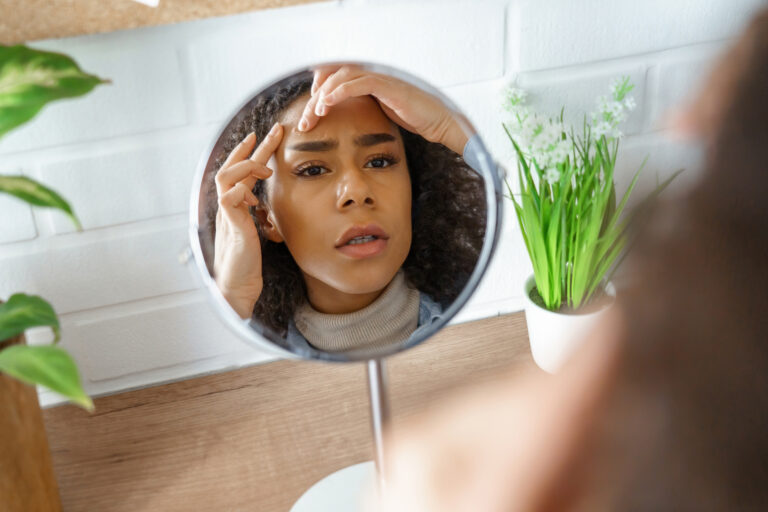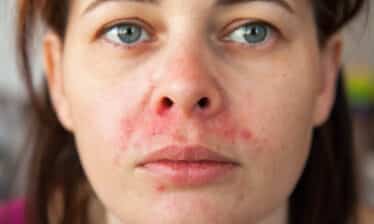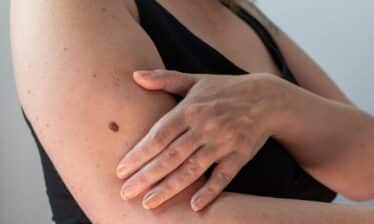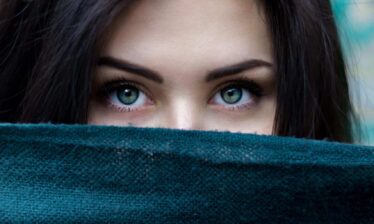If you deal with persistent pimples, bumps, and redness on your forehead, you’re not alone. Acne is the most common skin condition in the United States, affecting up to 50 million people each year.1
Acne symptoms can be even more stressful when they develop in as visible a location as your forehead.
These red, painful bumps can crop up at any time, especially in the oily or acne-prone areas of your forehead or chin. These breakouts are unsightly, but they can be painful, too.
Like acne that affects other parts of your face, forehead acne is treatable. A combination of over-the-counter products, prescription medications, and skincare treatments can prevent these breakouts and keep your forehead clear.
Below, we’ll cover why forehead acne develops in the first place and the best science-based treatment options to clear it up for good.
What is Forehead Acne?
Acne is a chronic skin condition that develops when the glands beneath the skin’s surface become blocked.2 It can develop anywhere on the body — including shoulders, back, chest, and arms — but it’s most common on the face.
The pores in your skin naturally produce an oily substance called sebum. When too much of this sebum is present on the skin, it can block the pores with oil, dead skin cells, and bacteria. The strain of bacteria P. acnes was long thought to be the cause of most forms of acne, but it isn’t always the root cause of breakouts3.
Some forehead acne can be triggered by fungal acne, which is a different kind of skin condition. Brought on by warm and damp conditions, this acne tends to form small clusters of bumps that itch and don’t respond to standard acne treatment4.
When acne is present on the forehead, you might notice several different symptoms. Types of acne on the forehead can include 2:
- Blackheads are clogged pores that look like tiny dark spots on the skin
- Whiteheads are closed bumps, often with a white tip
- Papules are tiny bumps that tend to be red and inflamed
- Pustules are whiteheads that contain pus, often surrounded by a ring of red, inflamed skin
- Fungal acne is triggered by yeast and can look like itchy, inflamed bumps
- Nodules are large, painful bumps that form deep beneath the skin
- Cysts are pimples that form deep under the skin, like nodules, but are also filled with pus
All of these forms of acne can affect your health and self-esteem. At best, they may be irritating, but other cases are much more painful and disruptive.
Forehead Acne Causes
Anyone can develop forehead acne, but some factors can increase your risk. The causes of forehead acne can include5:
- Hormonal changes — Acne is common during puberty and early adulthood when hormone levels fluctuate. An increase in testosterone or decrease in estrogen (during periods or menopause, for example) can trigger breakouts.
- Stress — High levels of stress can aggravate acne breakouts. Research shows that the higher the stress level, the more severe the acne tends to be6.
- Hygiene — While this isn’t always the case, not washing the face properly can lead to a buildup of oil that produces acne.
- Skin or hair care products — Some skin or hair care products can inflame the skin or block pores, causing more acne. In particular, hair sprays, waxes, and pomades can block pores on the forehead, especially along the hairline.
- Skin irritation — Frequently touching the skin or wearing masks, hats, and other accessories can also irritate the forehead, aggravating the skin and triggering a breakout.
While the prevailing myth is that acne is caused by poor hygiene, it’s important to note that this isn’t always the case. Many people with forehead acne are diligent about cleansing or even have dermatologist-recommended skincare routines to treat their acne. It’s usually a combination of the above factors that causes forehead acne.
How to Treat Forehead Acne
While forehead acne can be stubborn and hard to clear, even the most severe breakouts are treatable. Using a combination of over-the-counter products, healthy skincare habits, and even prescription medication, you can make a difference in your forehead breakouts.
Over-the-Counter Products
If your forehead acne is mild or moderate, you may be able to treat it using over-the-counter products. Many of these can be found in drugstores, while more high-end products can be found online or in dedicated skincare stores. Here are some of the options you can use to clear your forehead acne:
Facial Cleansers
A facial cleanser can keep your skin free of excess sebum. If you use other active ingredients, most dermatologists recommend using a hydrating and gentle cleanser on the skin7.
Benzoyl Peroxide
This over-the-counter medication typically comes in a topical form, like a serum, cream, or spot treatment. It’s known for killing acne-causing bacteria, and it can even reduce inflammation in a few hours.
Salicylic Acid
Another powerful acne-fighting ingredient often found in cleansers, toners, or serums. This exfoliating acid unclogs pores and reduces inflammation.
Azelaic Acid
While less common than benzoyl peroxide and salicylic acid, azelaic acid can also target acne concerns. It gently exfoliates the skin’s surface, clearing breakouts and brightening scars. It’s usually found as a topical gel or cream.
Prescription Medications
For more severe cases of acne, a dermatologist might prescribe certain medications. These can include:
- Topical or oral retinoids
- Other oral antibiotics, like clindamycin
If you have severe forehead acne, it’s important to turn to your healthcare provider or a dermatologist for help. With the right combination of products and medications, you can more effectively address the root of your acne.
Taking Back Control of Your Skin
Acne on the forehead can be intensely frustrating and even painful. While it’s something that many people get, you don’t have to live with it forever.
Whether or not you’re using over-the-counter or prescription ingredients, always take the time to deep cleanse your face and use a hydrating moisturizer to keep your skin barrier healthy. If your efforts aren’t working, it might be time to speak to your doctor or dermatologist to take the next step in your treatment plan.
To learn more about how to effectively fight acne and keep your skin healthy, find more resources with My Skincare Routine.
SOURCES:
- American Academy of Dermatology Association: ” Skin Conditions By the Numbers.”
- Cleveland Clinic: ” Acne.”
- Scientific Reports: ” The balance of metagenomic elements shapes the skin microbiome in acne and health.”
- WebMD: ” What is Fungal Acne?.”
- Medical News Today: ” What causes forehead acne?“
- Clinical, Cosmetic and Investigational Dermatology: ” The association between stress and acne among female medical students in Jeddah, Saudi Arabia.” 7. Verywell Health: ” Cleansing Tips for Acne Prone Skin.”






